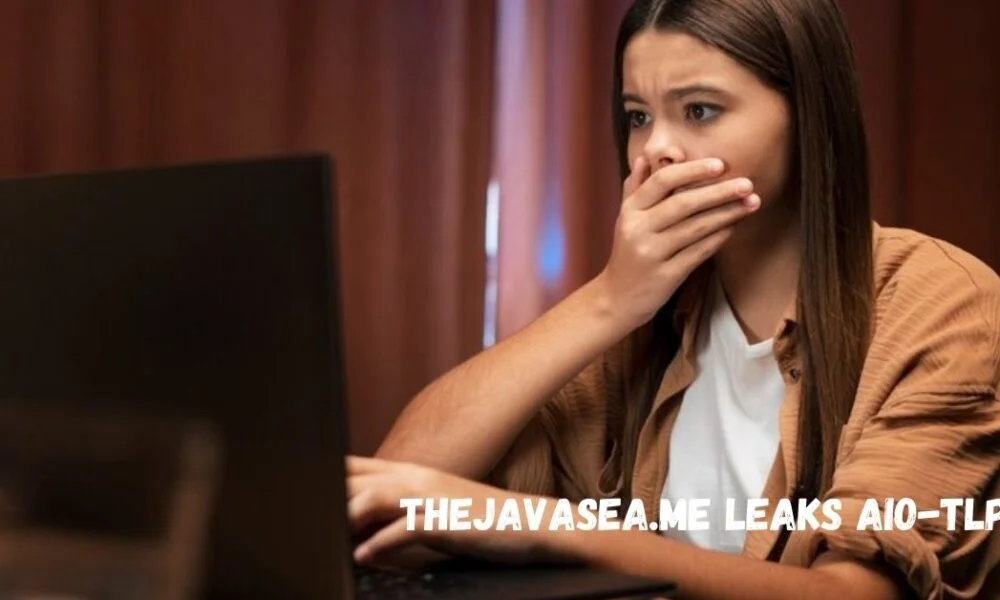TheJavaSea.me Leaks AIO-TLP? In an era where information flows freely across the internet, leaks have become a major concern for businesses, governments, and individuals alike. From classified government documents to sensitive corporate data and even private communications, leaks can have a profound impact on all aspects of society. One of the emerging platforms in this realm is thejavasea.me, which has become a hotspot for leaks, including a specific incident related to AIO-TLP (All-In-One Threat Landscape Platform). This article aims to explore the significance of this leak, its implications, and how it fits into the larger conversation around data security and privacy.
What is thejavasea.me?
Thejavasea.me is a website that has gained notoriety for hosting and distributing leaks, often involving sensitive data that has been illicitly obtained. These leaks range from corporate documents to personal information, government communications, and other critical data. The platform operates on the fringes of the internet, often evading law enforcement and cybersecurity agencies due to its decentralized nature and the anonymity of its users.
AIO-TLP: An Overview
Before diving into the specific leak, it’s important to understand what AIO-TLP is. The All-In-One Threat Landscape Platform (AIO-TLP) is a cybersecurity tool designed to provide real-time threat intelligence and security assessments. It aggregates data from various sources to help organizations detect, monitor, and respond to cyber threats. This platform is used by cybersecurity professionals to track malware, hacking attempts, and other forms of cybercrime.
AIO-TLP plays a crucial role in protecting organizations from data breaches, hacking attempts, and other cyber threats. It consolidates threat data from a multitude of sources, providing users with a unified view of the threat landscape. This allows for more effective defense mechanisms and proactive threat hunting.
The Significance of the AIO-TLP Leak
The leak of AIO-TLP data on thejavasea.me has raised alarm bells within the cybersecurity community. The platform is designed to be highly secure, given its function in protecting against cyber threats. However, the fact that this tool itself became the victim of a leak showcases the evolving nature of cyber threats and the increasing boldness of cybercriminals.
Potential Consequences of the Leak
- Compromised Security Strategies: AIO-TLP is used by various organizations to formulate their cybersecurity strategies. A leak of this platform’s data could potentially expose these strategies, giving hackers and cybercriminals valuable insight into the tools and techniques being used to combat them. This could lead to more sophisticated and targeted attacks.
- Data Integrity Issues: The integrity of threat intelligence data could be compromised. If the leaked data is manipulated or altered in any way, it could mislead cybersecurity professionals and result in ineffective or even harmful countermeasures.
- Loss of Trust: Organizations rely on platforms like AIO-TLP to secure their networks and protect their sensitive data. A breach in this platform’s data could erode trust in the efficacy of threat intelligence platforms, leading to hesitation in adopting similar tools in the future.
- Legal and Financial Repercussions: For businesses and organizations using AIO-TLP, the leak could result in significant legal and financial consequences. Data breaches often lead to regulatory penalties, lawsuits, and a loss of customer trust, all of which can be detrimental to a company’s reputation and bottom line.
How the Leak Happened
While the exact details of how the AIO-TLP leak occurred remain unclear, it is believed that the platform was targeted by a group of highly skilled hackers who exploited a vulnerability in the system. This is a common tactic used by cybercriminals to gain access to sensitive data.
Hackers often employ methods such as phishing, SQL injection, or exploiting zero-day vulnerabilities to breach secure systems. In this case, it is likely that a combination of these techniques was used to gain unauthorized access to AIO-TLP. Once inside the system, the hackers were able to exfiltrate data and make it available on platforms like thejavasea.me.
The Role of the Dark Web in Leaks
The leak of AIO-TLP data on thejavasea.me is a prime example of how the dark web plays a central role in the distribution of illicit information. The dark web, a hidden part of the internet that is not indexed by traditional search engines, is a haven for illegal activities, including the sale of stolen data, drugs, weapons, and other contraband.
Platforms like thejavasea.me operate on the dark web, allowing users to remain anonymous while sharing and distributing stolen data. The anonymity provided by the dark web makes it difficult for law enforcement agencies to track down the individuals responsible for these leaks.
Cybersecurity Implications and Response
The leak of AIO-TLP data highlights the need for more robust cybersecurity measures. Even the most secure platforms can fall victim to cyberattacks if proper precautions are not taken. As cybercriminals become more sophisticated, organizations must stay ahead of the curve by adopting the latest security technologies and practices.
Steps for Enhancing Cybersecurity
- Regular Security Audits: Organizations should conduct regular security audits to identify and address vulnerabilities in their systems. These audits can help prevent cyberattacks by ensuring that all security measures are up to date and functioning properly.
- Encryption of Sensitive Data: Sensitive data should always be encrypted to protect it from being accessed by unauthorized individuals. Even if hackers manage to breach a system, encrypted data will be much more difficult to decipher.
- Employee Training: Many cyberattacks, such as phishing, rely on human error to succeed. By providing employees with proper cybersecurity training, organizations can reduce the likelihood of falling victim to these types of attacks.
- Multi-Factor Authentication (MFA): MFA adds an extra layer of security by requiring users to verify their identity through multiple means. This makes it much more difficult for hackers to gain unauthorized access to systems and data.
- Incident Response Plan: In the event of a data breach, organizations should have a well-defined incident response plan in place. This plan should include steps for containing the breach, assessing the damage, and notifying affected parties.
The Ethics of Leaks and Online Privacy
The leak of AIO-TLP data on thejavasea.me raises important ethical questions about the nature of leaks and online privacy. On one hand, leaks can serve as a form of accountability, exposing wrongdoing and holding powerful organizations to account. On the other hand, leaks can also be used for malicious purposes, such as damaging reputations, stealing sensitive information, or even endangering lives.
The ethical dilemma surrounding leaks is further complicated by the role of platforms like thejavasea.me, which operate outside the boundaries of traditional law enforcement. These platforms provide a space for whistleblowers and hackers alike, creating a murky environment where the lines between right and wrong are often blurred.
Conclusion: Navigating the Future of Cybersecurity
The leak of AIO-TLP data on thejavasea.me serves as a stark reminder of the ever-evolving nature of cyber threats. As technology continues to advance, so too will the tactics used by cybercriminals to exploit vulnerabilities and gain access to sensitive information.
For organizations, the key to navigating this landscape lies in adopting a proactive approach to cybersecurity. This means staying informed about the latest threats, investing in cutting-edge security technologies, and fostering a culture of vigilance within the organization.
At the same time, the ethical implications of leaks and online privacy must be considered. As society becomes more interconnected, the balance between transparency and security will continue to be a major point of contention.
Ultimately, the AIO-TLP leak is just one chapter in the larger story of cybersecurity and online privacy. The lessons learned from this incident will undoubtedly shape the way organizations approach security in the years to come. Whether thejavasea.me continues to be a source of leaks or fades into obscurity, the impact of its activities will be felt for a long time.



